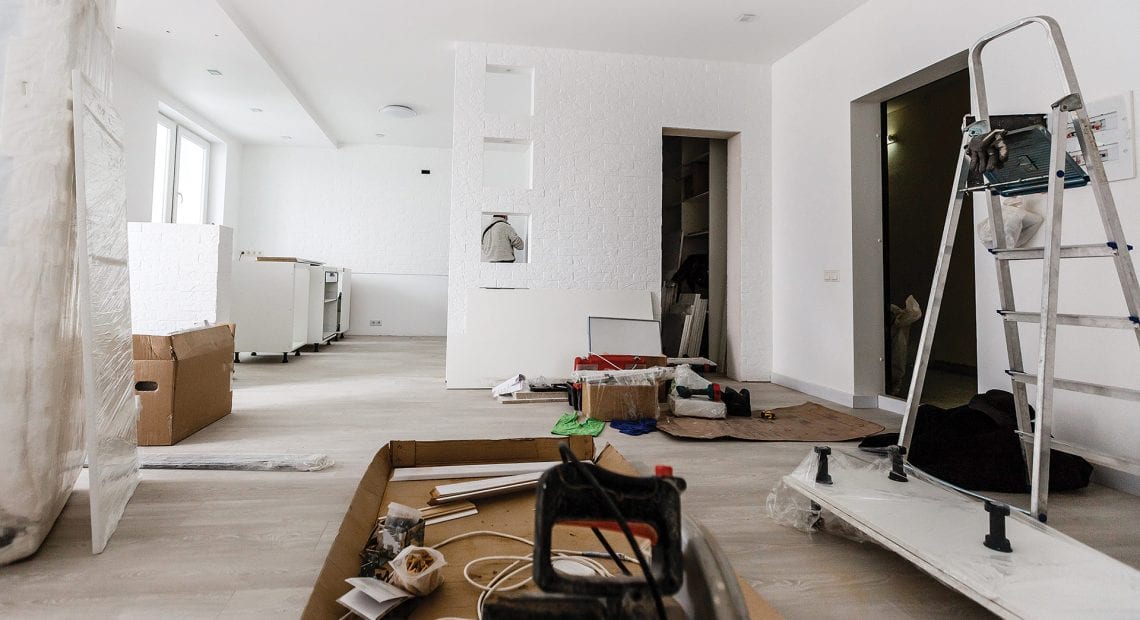Help Wanted
 With home-improvement demand surging in 2019, contractors say they can pick and choose from available jobs, which isn’t always ideal for consumers, who often have trouble finding a professional who can fit them in. In realty, most contractors would love to take on more jobs — but can’t because it’s not easy to find talent, especially young talent with the potential to grow with a company over the long term.
With home-improvement demand surging in 2019, contractors say they can pick and choose from available jobs, which isn’t always ideal for consumers, who often have trouble finding a professional who can fit them in. In realty, most contractors would love to take on more jobs — but can’t because it’s not easy to find talent, especially young talent with the potential to grow with a company over the long term.
In one sense, it’s a good problem to have, Andy Crane said — but it’s still a problem.
He’s talking about an ongoing shortage of skilled labor in the construction field, making it difficult for companies to keep up with what continues to be high consumer demand for home-improvement projects.
The good part of the problem is that they can be more selective about the projects they want to tackle, but that’s not always great for the consumer, and it stifles growth, said Crane, executive director of the Home Builders and Remodelers Assoc. of Western Mass.
“There’s a lot of work to be done, but the workforce is very tight, and it’s difficult for companies to respond to everyone. They’re just booked out for a long period of time,” he went on. “Skilled labor — especially young skilled labor — is few and far between.”
Crane gets calls from homeowners looking for a contractor for a project but struggling to nail one down who can fit them in, and that labor shortage has a lot to do with it, he told BusinessWest. “A lot of contractors are in the same boat. I guess it’s a good problem on our side, but it’s bad PR.”
Stephen Ross, partner at Construct Associates in Northampton, understands the problem well. “We just hired two new guys, which is a nice thing to be able to do these days. We just snapped them up. It’s hard — the majority of people applying for jobs have been in their late 50s, even early 60s. But we try to hire for the long haul.”
Still, business has been positive for a long stretch now at Construct, which boasts plenty of residential construction in its mix of projects.
“Kitchens and bathrooms are still big sellers around here — lots and lots of them,” Ross said, noting that the prevailing design trends of the past couple of years continue to dominate, among them open floor plans, tile in bathrooms, hardwood floors, and granite and quartz surfaces in kitchens.
The Home Improvement Research Institute (HIRI), which issues quarterly state-of-the-industry reports, is bullish on the rest of 2019. According to HIRI’s quarterly Project Sentiment Tracking Survey of 3,000 homeowners, several trends stand out:
• About 75% of homeowners are planning one or more projects in the next three months — the highest project-planning incidence since tracking began in 2012, according to the organization.
• The top motivators for projects include repair, replacement, and routine maintenance.
• The average homeowner plans to complete 4.3 projects in the next three months.
• The top projects include kitchens, windows, driveways, exterior paint, and roofs.
• The Northeast is home to the nation’s highest percentage of project planners in the second quarter — not surprising, as the region’s housing stock tends to be older than in many other areas of the country, so there’s plenty of work to be done.
Other Trends
Energy efficiency remains a trend at the forefront of home improvement as well. Each year, Fixr, an online home-improvement community, polls experts in the home-design industry to discover what the upcoming trends in home design and building will be. This year, the site polled industry experts on what they believe are the top ways that homeowners will utilize design trends and new innovations to help lower their energy bills in the coming years.
According to the poll, a majority of homeowners are personally motivated to save energy in order to save money, yet they also have a significant environmental awareness, which is driving some decisions.
The poll revealed that ducts and windows are the two most effective places to save through air sealing, heat pumps are the most popular method to heat an energy-efficient house, tankless heaters are the most efficient way to heat water, solar power remains the most common way to utilize renewable energy in the home, and cellulose and fiberglass are tied as the most popular ways to insulate an attic.
Another trend analysts have been keeping an eye on for years has been the rise of DIY (do-it-yourself) projects, spurred partly by a greater variety of resources available to homeowners and the abundance of inspiration available on home-improvement television programs and websites.
According to HIRI, roughly two-thirds of completed home-improvement projects are done completely DIY, and three-quarters have at lease some DIY involvement. The level of professional work is dependent on the project. Painting and landscaping are overwhelmingly DIY, while roof and siding replacement are heavily dependent on professional work. Interestingly, HIRI’s poll suggests that, while most who finish their projects are satisfied, those who complete them totally DIY report a higher satisfaction rate.
Not surprisingly, projects done with professionals cost significantly more than those undertaken DIY, and survey respondents who used professional contractors showed a higher likelihood of having the total cost of their project be higher than expected.
As homeowners age, they tend to move away from doing the work by themselves, shifting to professional contractors more frequently. Baby Boomers are twice as likely to hire a pro than a Millennial. The use of professionals is also largely dependent on household income. As family income goes up, so does the likelihood that a contractor is hired to complete a remodeling project.
Whether professional or DIY, annual gains in improvement and repair spending, while still healthy, are projected to continue decelerating through early 2020, according to the Leading Indicator of Remodeling Activity (LIRA) released by the Remodeling Futures Program at the Joint Center for Housing Studies of Harvard University. LIRA forecasts that year-over-year growth in homeowner remodeling expenditure will slow from about 7% this summer to 2.6% by the first quarter of 2020.
“Cooling house price gains, home-sales activity, and remodeling permitting are lowering our expectations for home-improvement and repair spending this year and next,” said Chris Herbert, managing director of the Joint Center for Housing Studies. “Yet, more favorable mortgage rates could still give a boost to home sales and refinancing … which could help buoy remodeling activity.”
Abbe Will, associate project director in the Remodeling Futures Program, added that “home-improvement and repair spending has been in an extended period of above-trend growth for several years, due to weak homebuilding, aging homes, and other factors. However, growth in remodeling is expected to fall below the market’s historical average of 5% for the first time since 2013.”
Aging in Place
One strong home-improvement trend in the Northeast involves Baby Boomers, who continue to pour into their retirement years at the rate of about 10,000 a day — and want to spend those years in their own homes if possible. As a result, many projects today involve making those homes safer and more accessible, with improvements ranging from night and security lights to wider interior walkways to curbless showers.
But older homeowners are also going for modern and attractive features, Ross said. “People are wrapping things up, things they’ve let go for decades. People are moving toward fixed incomes and are planning that last hurrah — maybe a garage addition. Or decks need replacing, or siding needs replacing — and nothing gets cheaper the longer you wait.”
In fact, building costs are more expensive than ever, Crane said, for reasons ranging from heavy regulation in Massachusetts to new tariffs at the federal level to inevitable economic trends. But the landscape remains a healthy one for builders and remodelers — if they can find the help they need.
“Construction companies can pick and choose their jobs,” he said. “It’s a great sellers’ market.”
Joseph Bednar can be reached at [email protected]









